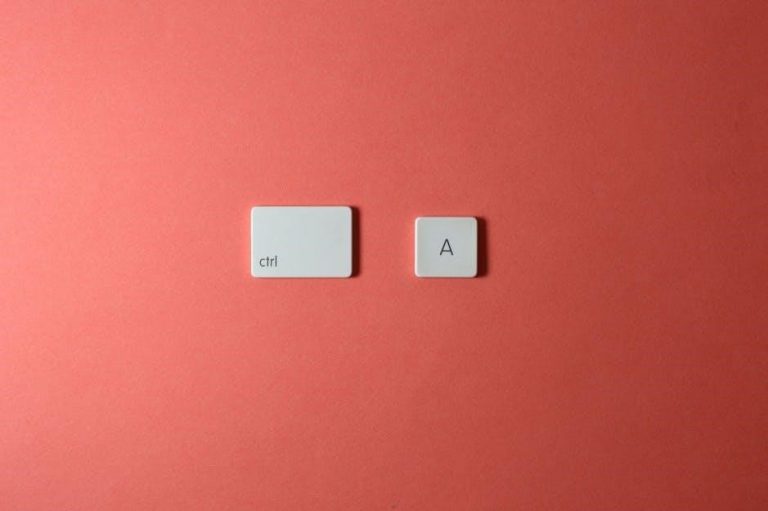The Freestyle Optium Neo is a blood glucose and ketone monitoring system designed for fast and accurate testing. It offers a user-friendly interface, dose guide, and insulin logging features for effective diabetes management.
1.1 Overview of the Freestyle Optium Neo
The Freestyle Optium Neo is a personal-use blood glucose and ketone monitoring system designed for fast and accurate testing. It includes a dose guide and insulin logging features, making it an essential tool for diabetes management. The system requires specific test strips and control solutions to ensure accuracy. Users must follow the instructions provided in the manual to operate the device correctly. The Freestyle Optium Neo is intended for monitoring blood glucose and β-ketone levels in fresh capillary, venous, or arterial blood samples. It is compact, user-friendly, and provides reliable results for effective glucose control. Proper usage ensures optimal performance and accurate readings, helping users maintain their health effectively. Always refer to the user manual for detailed instructions and guidelines.
1.2 Key Features of the System
The Freestyle Optium Neo system offers several key features that enhance its functionality and user experience. It supports blood glucose and β-ketone testing, providing comprehensive monitoring for diabetes management. The system requires specific FreeStyle Precision Neo test strips and control solutions to ensure accurate results. It also includes a dose guide and insulin logging capabilities, allowing users to track their medication and glucose levels effectively. The system is designed for use with fresh capillary, venous, or arterial blood samples, making it versatile for different testing needs. Its compact design and user-friendly interface make it easy to operate. Additionally, the system emphasizes the importance of following instructions carefully to maintain accuracy and reliability. Regular quality control tests are recommended to ensure optimal performance. These features combine to provide a reliable and efficient monitoring solution for users.

System Components
The Freestyle Optium Neo system consists of a meter, test strips, control solutions, and a user manual, ensuring accurate blood glucose and ketone monitoring for effective diabetes management.
2.1 Understanding the Meter
The Freestyle Optium Neo meter is a compact, portable device designed for accurate blood glucose and ketone testing. It works exclusively with FreeStyle Precision Neo test strips, which are essential for obtaining precise results. The meter features a user-friendly interface with a clear display, making it easy to navigate and interpret test outcomes. To ensure accuracy, the meter requires periodic quality control tests using control solutions. These tests verify that the device is functioning correctly and providing reliable readings. The meter also includes a memory storage feature to track previous results, helping users monitor their glucose and ketone levels over time. Always refer to the user manual for detailed instructions on operating and maintaining the meter to ensure optimal performance and accurate results. Regular maintenance and correct usage are crucial for effective diabetes management.
2.2 Test Strips and Their Usage
The FreeStyle Optium Neo test strips are essential for accurate blood glucose and ketone testing. These strips are designed for exclusive use with the FreeStyle Optium Neo meter and are highly sensitive to ensure precise results. To use the test strips, first, ensure they are not expired and are stored in their original vial to maintain their effectiveness. Before testing, wash and dry your hands thoroughly to avoid contamination. Insert a test strip into the meter, ensuring it clicks into place. Gently prick your finger or an alternate site with a lancet to obtain a small blood sample. Allow the blood to fill the sample area on the strip completely. The meter will automatically detect the sample and display the result within seconds. Always handle test strips with clean, dry hands and discard used strips properly to maintain hygiene and prevent cross-contamination.
2.3 Control Solutions for Accuracy
Control solutions are crucial for ensuring the accuracy of the FreeStyle Optium Neo system. These solutions are specifically designed to verify that both the meter and test strips are functioning correctly. They contain known glucose or ketone concentrations, allowing you to confirm that your results fall within the expected range. To use a control solution, insert a test strip into the meter and apply a small drop of the control solution to the strip’s sample area. The meter will display the result, which should match the range indicated on the control solution vial. If the result is outside this range, refer to the troubleshooting section or contact customer support. Regular use of control solutions helps maintain the reliability of your test results and ensures optimal performance of the FreeStyle Optium Neo system. Always use the control solutions provided by the manufacturer for best results.
2.4 The Role of the User Manual
The user manual is an essential resource for understanding and operating the FreeStyle Optium Neo system effectively. It provides comprehensive instructions on setup, usage, and troubleshooting, ensuring users can navigate the device with confidence. The manual includes detailed information on performing blood glucose and ketone tests, interpreting results, and maintaining the system. It also covers safety precautions, warranty details, and contact information for support. By following the guidelines in the manual, users can ensure accurate test results and prolong the lifespan of their device. The manual serves as a quick reference for resolving common issues and understanding error codes. Regularly reviewing the manual helps users stay informed about best practices and optimal use of the FreeStyle Optium Neo. It is recommended to keep the manual handy for easy access to important information whenever needed.

Preparing the Meter for Use
Preparing the FreeStyle Optium Neo meter involves unboxing, installing the battery, and setting the date and time. This ensures the device is ready for accurate blood glucose monitoring.

3.1 Unboxing and Initial Setup
Carefully unpack the FreeStyle Optium Neo meter from its box and inspect for any visible damage. Locate the meter, test strip vial, control solution, and user manual. Before first use, ensure all components are included and undamaged. Gently handle the meter and strips to avoid damage. Open the test strip vial and ensure the desiccant is intact to maintain strip quality. Familiarize yourself with the meter’s buttons and display screen. Insert the battery (if not pre-installed) and ensure it is securely placed. Power on the meter by pressing and holding the button until the screen lights up. Follow the on-screen prompts to complete the initial setup, such as setting the date and time. Read the user manual thoroughly to understand the device’s operation and safety precautions. Proper unboxing and setup are essential for accurate and reliable blood glucose monitoring.

3.2 Installing the Battery
To install the battery in your FreeStyle Optium Neo meter, first locate the battery compartment on the back of the device. Slide the compartment cover downward to access the battery slot. Insert the provided lithium battery (CR2032) with the positive terminal facing upward. Ensure the battery is aligned correctly to fit snugly into the slot. Once installed, replace the compartment cover and secure it by sliding it back into place. Turn on the meter to verify the battery is functioning properly. If the screen lights up and displays the home screen, the installation was successful. Always use the recommended battery type to ensure optimal performance. Avoid using damaged or expired batteries, as this may affect the meter’s accuracy. Proper battery installation is essential for reliable blood glucose monitoring.
3.3 Setting the Date and Time
Setting the date and time on your FreeStyle Optium Neo meter is essential for accurate record-keeping of your blood glucose and ketone results. Begin by turning on the meter. Use the navigation buttons to scroll to the “Settings” menu and select “Date & Time.” Use the arrow keys to adjust the year, month, and day. Once the date is set, navigate to the time option and use the same keys to set the correct hour and minute. Ensure the time format (12-hour or 24-hour) matches your preference. After confirming the details, press the “OK” or “M” button to save your settings. The meter will automatically return to the home screen, and all future readings will be logged with the correct date and time. Accurate time settings are crucial for proper data management and compliance with medical tracking requirements.

Performing a Blood Glucose Test
To perform a blood glucose test with the FreeStyle Optium Neo, turn on the meter, insert a test strip into the strip port, and obtain a blood sample by pricking your fingertip. Apply the blood to the test strip, ensuring it fills the target area completely. The meter will analyze the sample and display your blood glucose level on the screen. Review the reading to assess your glucose levels and take appropriate action if necessary. After testing, properly dispose of the used test strip and turn off the meter if desired. Keep track of your readings for future reference and monitoring. Always refer to the user manual for specific guidelines and troubleshooting tips to ensure accurate results. Regular testing helps in effectively managing your diabetes and maintaining optimal health.
4.1 Instructions for Using Test Strips
Using test strips with the FreeStyle Optium Neo is straightforward. Always handle the strips by the edges to avoid contamination. Open the test strip vial just before use and close it tightly afterward to maintain humidity. Insert the test strip into the meter’s strip port, ensuring it aligns correctly until it clicks. Once the strip is inserted, the meter will automatically turn on. Wait for the meter to prompt you to apply a blood sample. Gently touch the tip of the test strip to your blood sample, ensuring the target area fills completely. Avoid adding more blood once the sample is applied. The meter will analyze the sample and display your blood glucose reading. After testing, dispose of the used strip safely. Always use a new strip for each test to ensure accuracy. Follow the user manual for specific guidelines on strip handling and usage. Proper use of test strips is essential for reliable results.
4.2 Obtaining a Blood Sample
To obtain a blood sample for testing with the FreeStyle Optium Neo, begin by washing your hands thoroughly with soap and water. Choose a finger, typically on your fingertip, and wipe it with an alcohol swab to clean the area. Allow the alcohol to dry completely before proceeding. Use a lancing device to create a small puncture. Gently press the device against your finger and trigger it to obtain a blood sample. Hold your finger downward to allow the blood to flow naturally. Avoid squeezing your finger excessively, as this can cause inaccurate results. If the blood flow is insufficient, repeat the process on a different finger. Once you have a small droplet of blood, proceed to apply it to the test strip as instructed. Proper technique ensures a comfortable and accurate testing experience. Always follow the user manual guidelines for safe and effective blood sampling.
4.3 Interpreting Blood Glucose Results
Once the FreeStyle Optium Neo displays your blood glucose result, it is essential to interpret the reading accurately. The meter provides a numerical value measured in mg/dL or mmol/L, depending on your settings. Understanding the range of your results is crucial for managing your diabetes effectively. Normal blood glucose levels typically fall between 70-140 mg/dL (3.9-7.8 mmol/L) when fasting and up to 180 mg/dL (10.0 mmol/L) after meals, though target ranges may vary based on individual health goals. If your result is above or below your target range, it may indicate the need to adjust your diet, insulin dosage, or physical activity. Consistently high readings (hyperglycemia) or low readings (hypoglycemia) should be addressed promptly to prevent complications. Use the data to identify trends and consult your healthcare provider for guidance. Always refer to your target ranges as recommended by your doctor.

Ketone Testing with the System
The FreeStyle Optium Neo allows for accurate ketone testing, essential for monitoring diabetic ketoacidosis risk. Use specific ketone test strips for precise results, ensuring proper health management.
5.1 Instructions for Ketone Testing
To perform a ketone test with the FreeStyle Optium Neo, follow these steps:
- Turn on the meter and ensure it is in ketone mode.
- Insert a FreeStyle Optium ketone test strip into the meter.
- Use a lancet to obtain a small blood sample from your fingertip.
- Apply the blood sample to the designated area on the test strip.
- Wait for the meter to display your ketone level.
- Refer to the provided guidelines to interpret the results.
Ensure strips are stored properly and dispose of used materials safely.
5.2 Understanding Ketone Results
Interpreting ketone results is crucial for managing your health effectively. The FreeStyle Optium Neo measures ketone levels in millimoles per liter (mmol/L). Normal ketone levels typically fall below 0.6 mmol/L, indicating no ketones or trace amounts. Elevated levels (0.7–1.4 mmol/L) suggest the presence of ketones, often due to fasting, diet, or early stages of ketosis. High levels (1.5–2.9 mmol/L) indicate moderate ketosis, which may require medical attention. Very high levels (≥3.0 mmol/L) signal severe ketosis, potentially leading to diabetic ketoacidosis (DKA), a serious condition requiring immediate care;
- Always compare your results with the target range provided by your healthcare provider.
- Consult your healthcare team for personalized interpretation and guidance.
Regular monitoring and understanding ketone results help prevent complications and ensure optimal health management.

Quality Control and Maintenance
Regular quality control checks and proper maintenance ensure the FreeStyle Optium Neo performs accurately. Clean the meter, replace batteries as needed, and use control solutions to verify performance.
6.1 Conducting Quality Control Tests
Quality control tests ensure the FreeStyle Optium Neo operates accurately. Start by gathering the control solution and test strips. Turn on the meter, insert a test strip, and apply the control solution. Compare the result to the expected range on the test strip vial. If the result is out of range, retest or contact customer support. Regular testing confirms the system’s reliability and accuracy for blood glucose and ketone measurements. Always follow the user manual for detailed steps to ensure proper operation. These tests are essential for maintaining trust in the results and for your health management. Perform quality control tests as recommended or if you suspect any issues with the meter or test strips.
6.2 Routine Maintenance Tips
Regular maintenance of the FreeStyle Optium Neo ensures optimal performance and longevity. Clean the meter with a soft, dry cloth to prevent dust buildup. Avoid using harsh chemicals or liquids, as they may damage the device. Store test strips in their original vials with the cap tightly closed to maintain their effectiveness. Replace the battery as needed, ensuring it is properly installed to avoid errors. Keep the meter away from extreme temperatures and moisture, which can affect accuracy. Regularly check the expiration dates of test strips and control solutions. Handle the meter with care to prevent damage from drops or bumps. For detailed maintenance guidelines, refer to the user manual. By following these tips, you can ensure reliable and accurate results from your FreeStyle Optium Neo system.

Recording and Managing Data
Efficiently track and manage your blood glucose and ketone results for better diabetes control. Use the FreeStyle Optium Neo to log insulin doses, monitor trends, and export data for analysis.
7.1 Logging Insulin Doses
Accurately logging insulin doses is essential for effective diabetes management. The FreeStyle Optium Neo allows users to easily record insulin doses, helping to track and manage blood glucose levels. The meter offers a user-friendly interface for inputting insulin information, including the type and amount administered. This feature ensures that users can monitor their insulin therapy alongside their blood glucose data. Regular logging helps identify patterns, optimize dosing, and improve overall diabetes care. The device stores insulin dose records, which can be reviewed to assess adherence to treatment plans. Additionally, logged data can be shared with healthcare providers for better monitoring and adjustments. Consistent insulin logging, combined with blood glucose tracking, supports comprehensive glucose control and informed decision-making for optimal health outcomes;
7.2 Tracking Trends in Blood Glucose
Tracking trends in blood glucose levels is a critical feature of the FreeStyle Optium Neo, enabling users to monitor their glucose patterns over time. The meter provides a comprehensive view of historical data, allowing users to identify trends, such as recurring high or low blood sugar levels at specific times of the day. This feature helps in understanding the impact of diet, exercise, and medication on glucose levels. The device also offers color-coded results and trend arrows, making it easier to interpret changes. By analyzing these trends, users can make informed adjustments to their diabetes management plan. Regular trend analysis supports better glycemic control and helps prevent complications. The FreeStyle Optium Neo’s user-friendly interface ensures that tracking and reviewing trends is simple and efficient, empowering users to take charge of their health effectively.
7.3 Effective Data Management Practices
Effective data management practices are essential for maximizing the benefits of the FreeStyle Optium Neo. Regularly syncing your data with a computer or mobile app ensures your records are up-to-date and easily accessible. Organizing your data by date or category helps in quick retrieval and analysis. Utilizing the software provided by the manufacturer allows you to generate detailed reports and track long-term trends. Setting reminders for blood glucose testing and data entry can improve consistency and accuracy. Additionally, consider backing up your data periodically to prevent loss and use cloud storage for seamless access across devices. By adhering to these practices, you can efficiently manage your diabetes data, facilitating better decision-making and improved health outcomes.

Troubleshooting Common Issues
Troubleshooting common issues with the FreeStyle Optium Neo involves identifying error codes, resolving test strip errors, and addressing connectivity problems. Refer to the user manual for detailed solutions or contact customer support for assistance.
8.1 Identifying Common Problems
Common issues with the FreeStyle Optium Neo include error codes, test strip errors, and connectivity problems. Error codes like “E-1” or “E-2” often indicate issues with the test strip or meter malfunction. Test strip errors may occur due to expired or damaged strips, while connectivity problems can arise when syncing the meter with a computer or app. Other issues include incorrect date/time settings, low battery, or failure to detect a blood or ketone sample. Users should consult the user manual or error code list to identify the specific problem and follow the recommended troubleshooting steps. If issues persist, contacting customer support is advised to ensure accurate results and proper device function.
8.2 Understanding Error Codes
Error codes on the FreeStyle Optium Neo are designed to help users quickly identify and resolve issues. Codes like “E-1” or “E-2” typically indicate problems with test strips or meter malfunctions. For example, “E-1” might signal an issue with the test strip, such as it being expired or improperly inserted. “E-2” could indicate a meter error, requiring a restart or battery check. Users should refer to the user manual or the manufacturer’s website for a complete list of codes and their meanings. Understanding these codes allows for quick troubleshooting, such as replacing a strip or cleaning the meter. If an error persists, contacting customer support is recommended to ensure accurate results and proper device function. Regularly reviewing error codes can also help prevent recurring issues.
